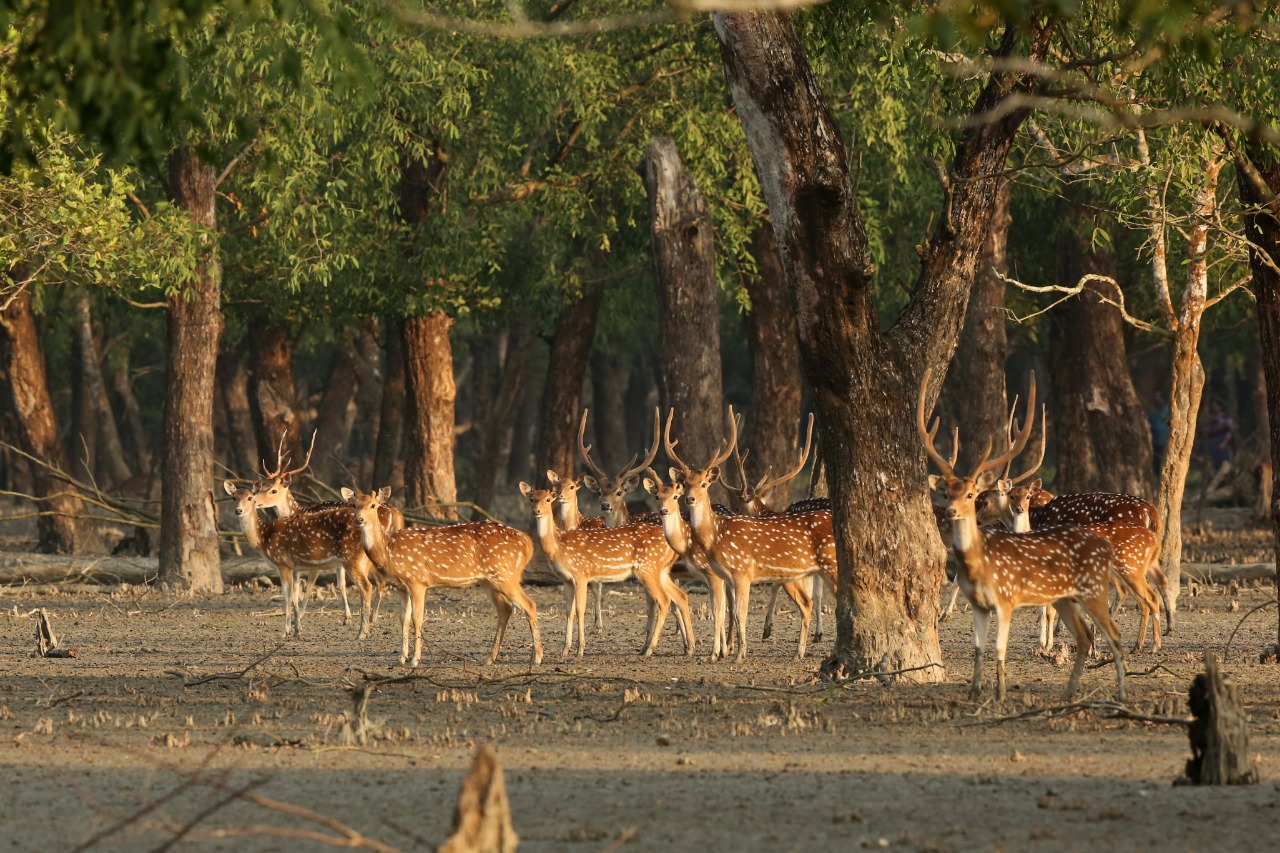Cyclone Amphan: What will happen to the wild animals of Sundarbans?

Dhaka, 12 June, 2020: As Cyclone Amphan hits Bangladesh, centring the Sundarbans, the wild animals would face the adverse effects directly
Although vulnerable people are evacuated from the coastal and forest areas ahead of tropical cyclones, the fate of the wild animals in the mangroves who face the devastation remains uncertain.
As Cyclone Amphan hits Bangladesh, centring the Sundarbans, the wild animals would face the adverse effects directly, according to the forest department.
“Since we have no way to evacuate the wild animals, they will suffer the most,” said Chief Forest Conservator Amir Hossain Chowdhury.
Many countries including the USA and Canada take initiatives to rescue the injured wild animals from the forest and treat them. However, Bangladesh usually does not take such measures to protect wild animals, nor does it rescue the injured animals after a cyclone.
Amir said: “Wild animals are mostly affected if a cyclone hits the forest with tidal surges. Especially deers, pigs, and reptiles, except crocodiles, die when a cyclone hits.”
“Sometimes, tigers are also affected, in our experience,” he added.
“Besides, if the cyclone hits with speedy wind bursts, birds are most affected,” he added.
In September 2017, the World Animal Protection charity sent emergency teams on their way to rescue, treat, and care for injured animals caught in the path of Hurricane Irma.
As Bangladesh does not take such initiatives, poachers rush to the scene to collect injured and dead animals as trophies to be sold. It is a big business among smugglers to collect skin and process leather. Poachers even harvest deers for meat.
However, if the animals are submerged in water for 10 hours or so, their skin becomes worthless to smugglers. Hence, they move quickly before the area is flooded.
“It will take a day or more for the situation to stabilize. No one can try to enter the forest before the weather returns to normal. So there is hardly a possibility to collect skin or meat from wild animals,” said Jahir Akond, director of Wildlife crime Control unit.
“We start patrolling once the situation becomes stable as no one can stay in the forest during the hours of devastation,” said Moin Uddin, the conservator of forest in Khulna Division.
The Sundarbans has been a safeguard for Bangladesh by shielding the country several times from massive storms and cyclones. For this, it is expected that the largest mangrove forest in the world would protect Bangladesh yet again from the raging Amphan.
On 15 November 2007, Cyclone Sidr with wind speeds of up to 260 km/h, made landfall in southern Bangladesh, causing over 3,500 deaths and severe damage. But had it not been for the Sundarbans, it would have been much more devastating.
Similarly, Sundarbans shielded Bangladesh on May 27–29, 2009 during Aila and in 2019 during Bulbul.
But many animals, birds, and trees are sacrificed to cyclones.
“Sundarbans and its animals are very resilient when it comes to survival. That is why the forest can serve us for long, despite repeated cyclones,” said Amir Hossain Chowdhury.
Read More
.

